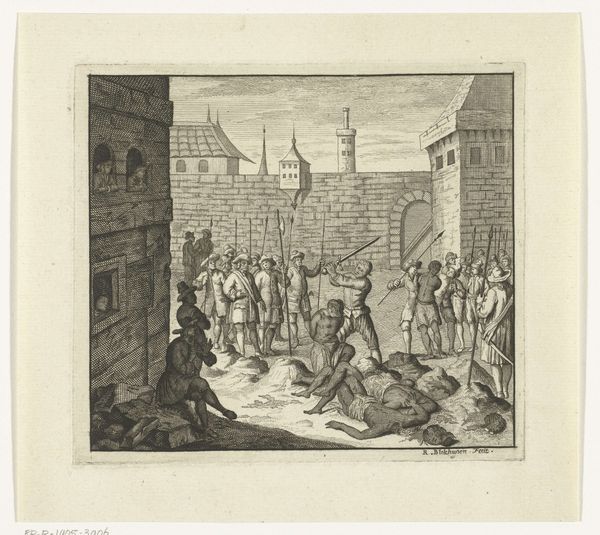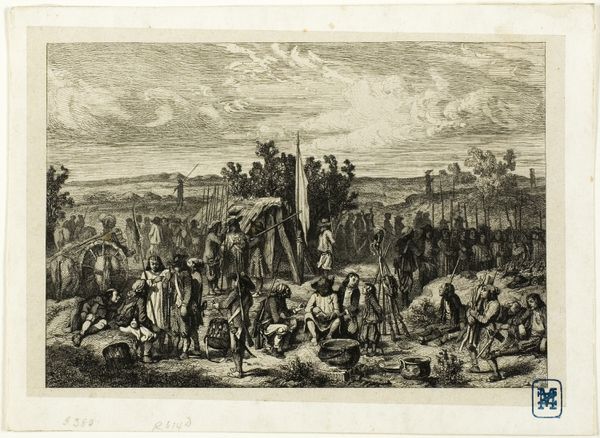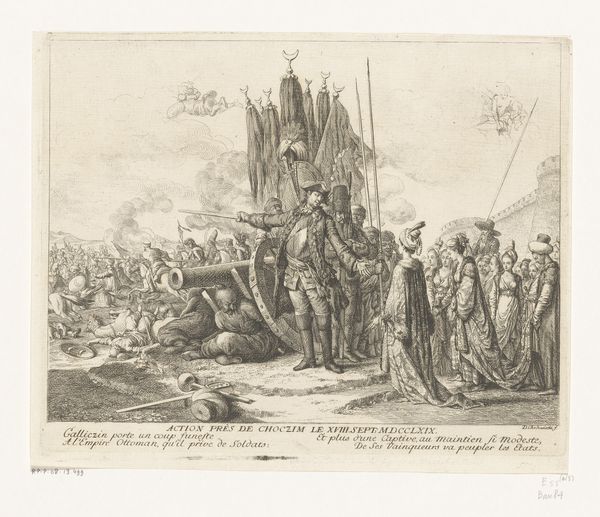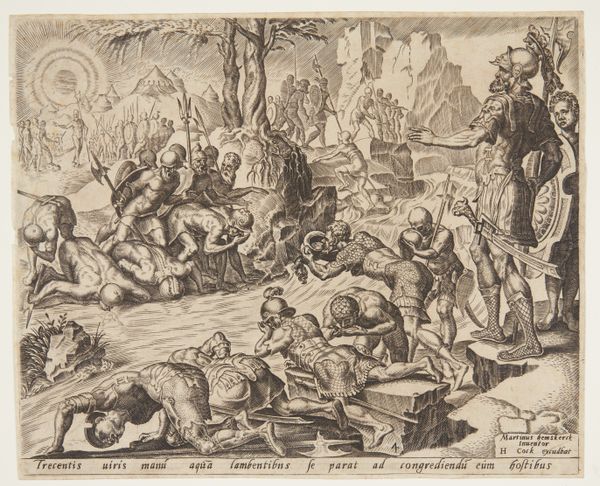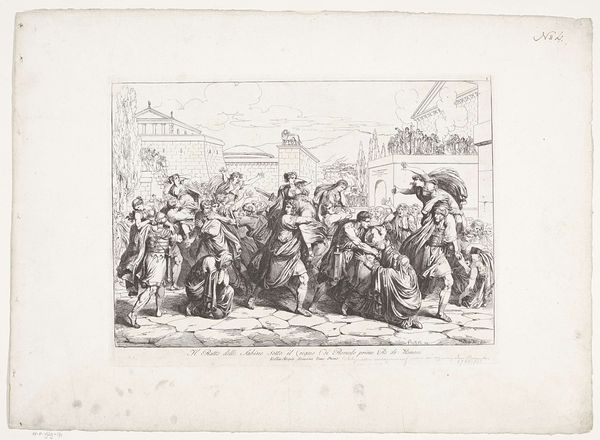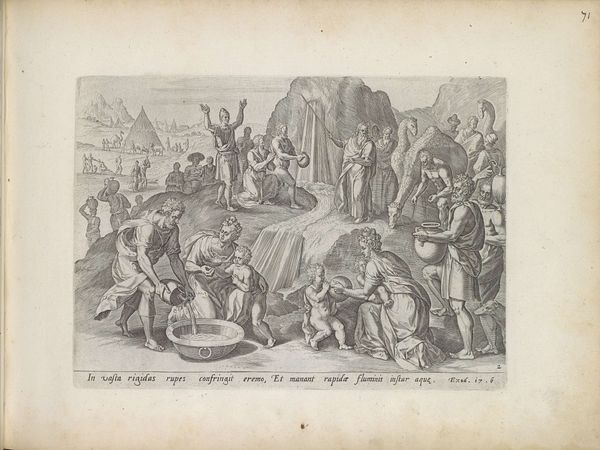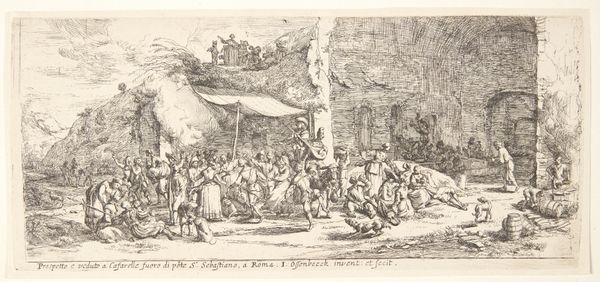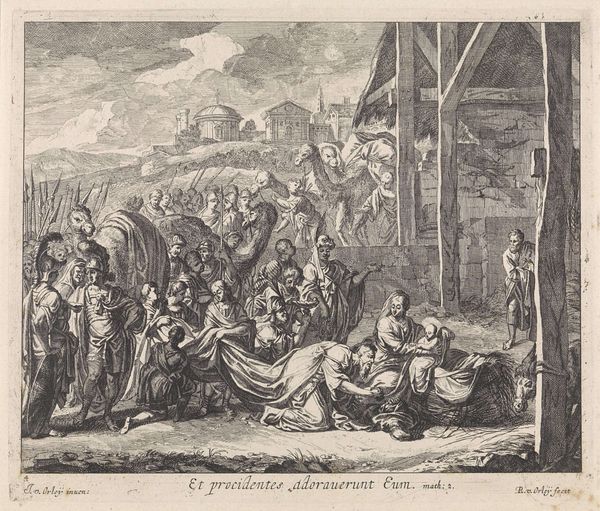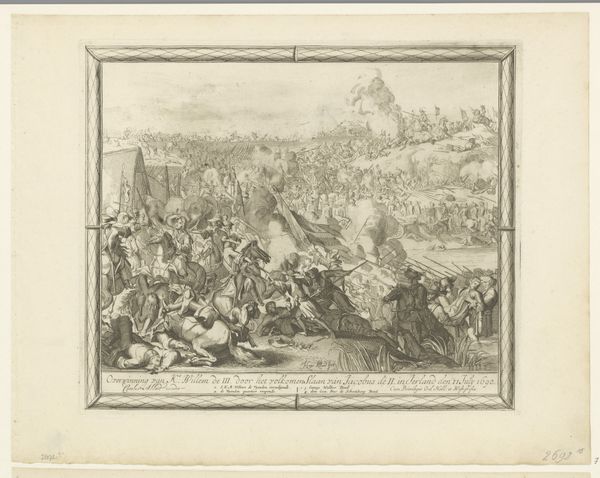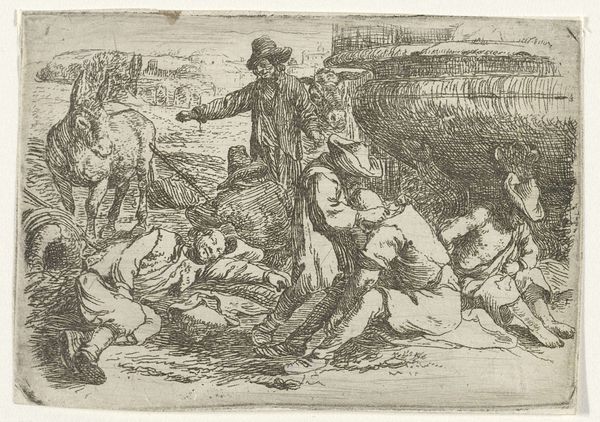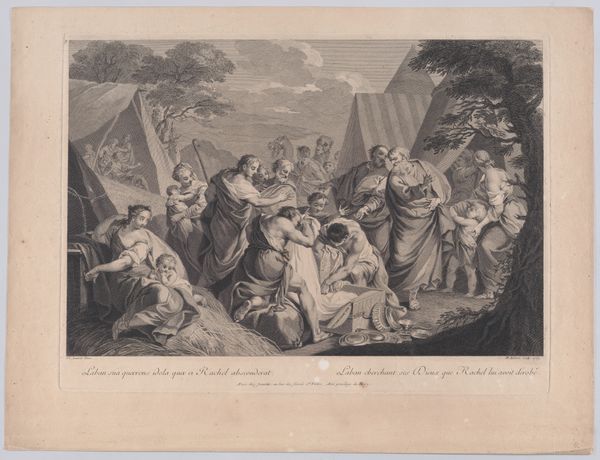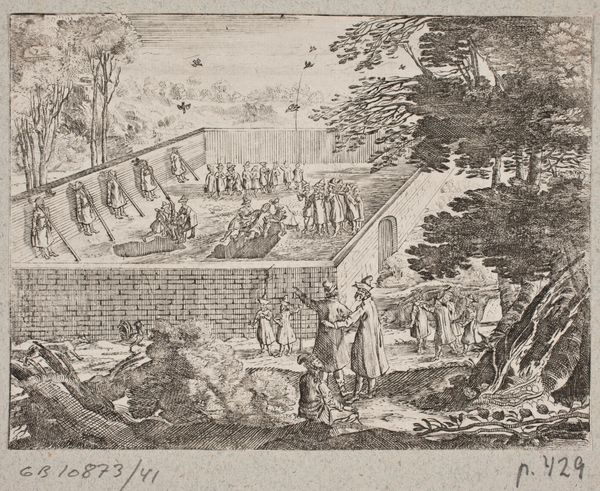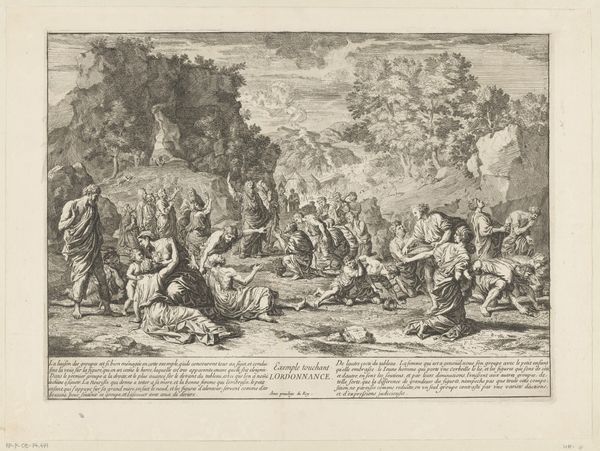
The People Delivered to the Vampire Taxes 1833
0:00
0:00
drawing, print, etching, ink
#
drawing
#
ink painting
# print
#
etching
#
caricature
#
charcoal drawing
#
ink
#
coloured pencil
#
genre-painting
Dimensions: sheet: 10 1/2 x 14 3/4 in. (26.7 x 37.4 cm) image: 9 3/16 x 13 1/4 in. (23.4 x 33.7 cm)
Copyright: Public Domain
Curator: I’m struck by the sheer strangeness of this scene! The aquatint etching, "The People Delivered to the Vampire Taxes," made in 1833, presents a dystopian view of labor and resources being drained. Editor: Dystopian is right. There's a real horror to the way these grotesque figures are presented. You have the figures down in a pit, overlooked by onlookers above, the people being fed, quite literally, to these monstrous tax collectors, made to look like various animals, rats, worms, insects. I'd argue that the material used to make this - etching - mirrors that by enabling reproduction on a mass scale like these taxes levied on society at the time. Curator: It's difficult to miss the visual metaphor here. The print embodies the critique of power and social hierarchy prominent during the July Monarchy. We have grotesque caricatures representing the tax collectors, almost vampiric as the title implies, preying on the populace while a detached elite watches from above. Considering Daumier was active in a time of vast political and economic change in France, his commentary would have undoubtedly struck a nerve. Editor: Absolutely. Think about the etching process itself. It’s laborious, time-consuming – a series of actions layered to create the final image. Daumier is mimicking and showing the burden of these oppressive economic and social forces working on, and in this case draining from, the lives of everyday people. It's no accident there is what looks like a mass of bodies laying prone. The figures laying down seem voided of any spirit; their bodies just a shell as the taxes are fed to the state above. It is very evocative. Curator: The choice to depict the scene as a public spectacle further reinforces this sense of powerlessness. These figures are trapped in this cycle. Is it their fate or destiny to remain stuck? Daumier's use of caricature elevates the satire. The scale is small yet intimate allowing us, the audience, to become a sort of gawker ourselves, forcing introspection in its critique of apathy towards societal inequity. It seems so clear that he saw what this type of unchecked system can foster. Editor: This artwork reminds us of the power structures underpinning seemingly abstract economic policies. By emphasizing their physical consequences, it encourages us to reconsider how value is assigned to both human beings and their work, now and then. Curator: Agreed. And it certainly gives one pause to consider the legacies and continued presence of these social and economic forces today.
Comments
No comments
Be the first to comment and join the conversation on the ultimate creative platform.
